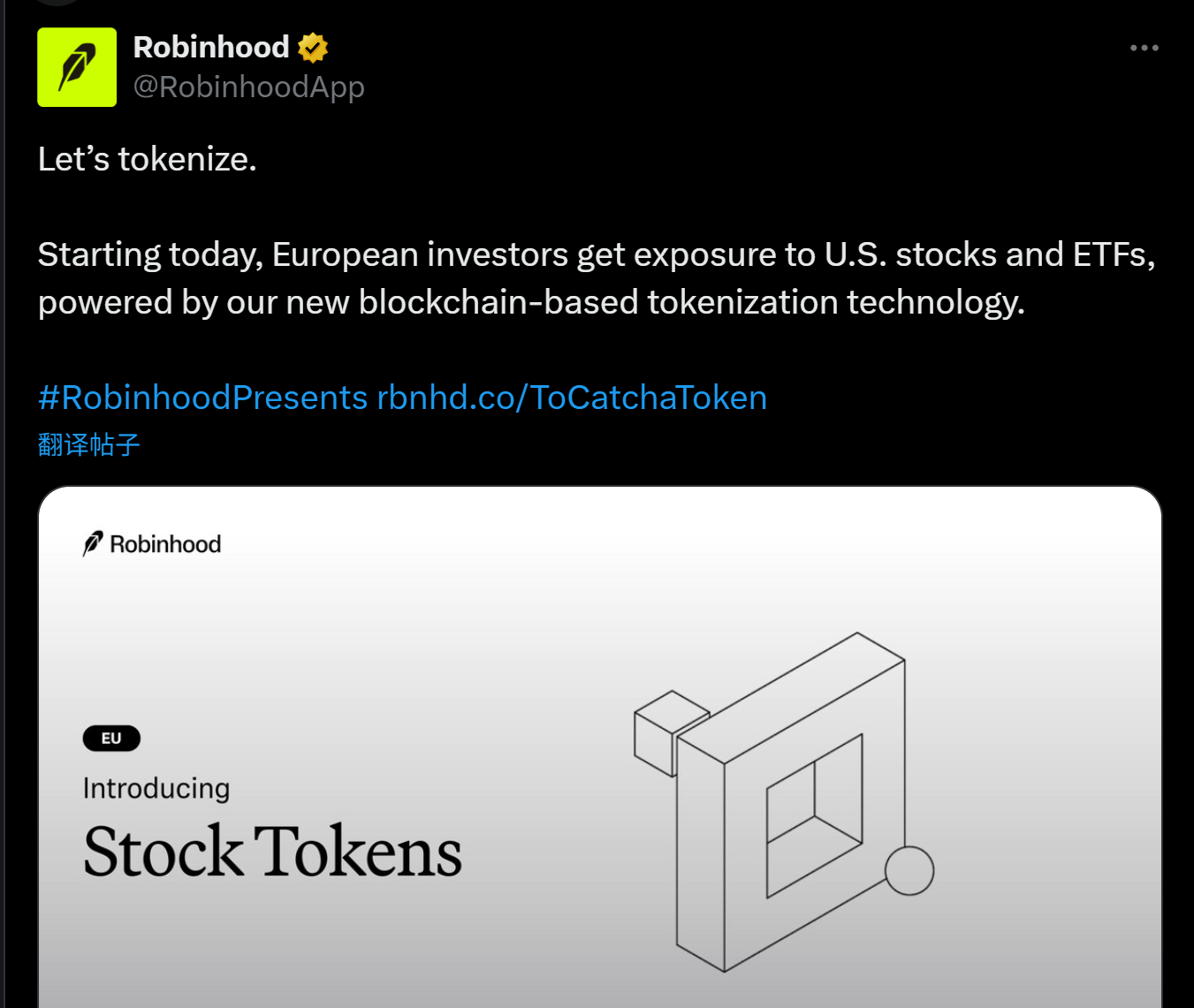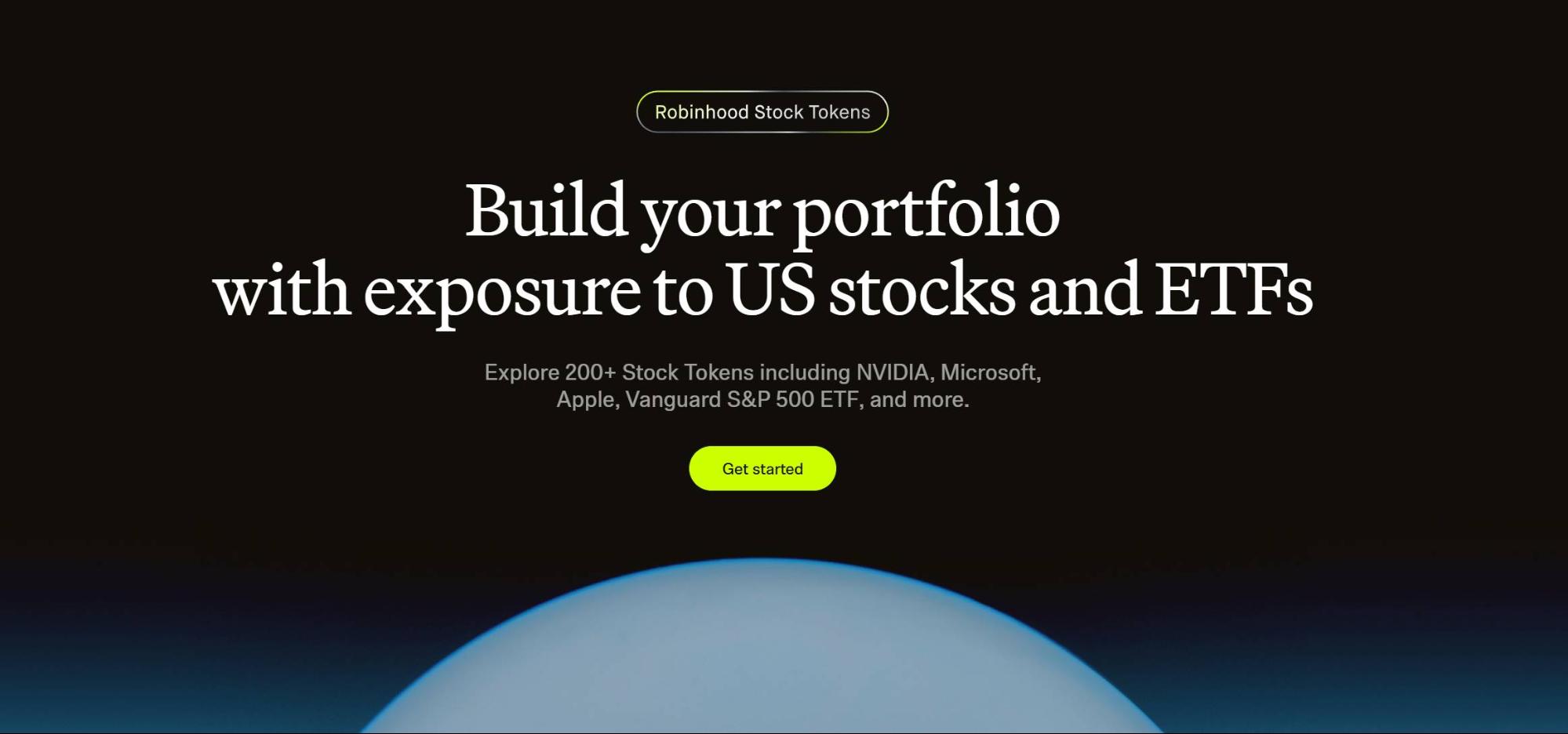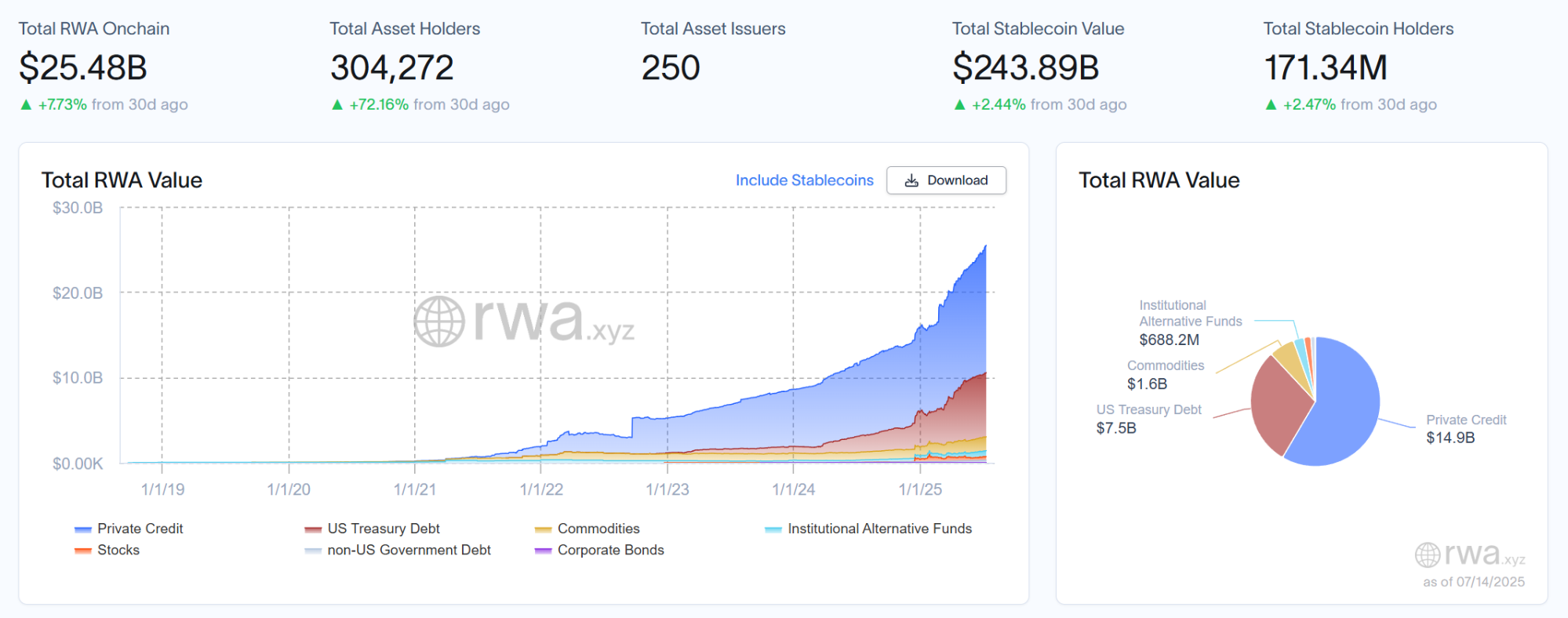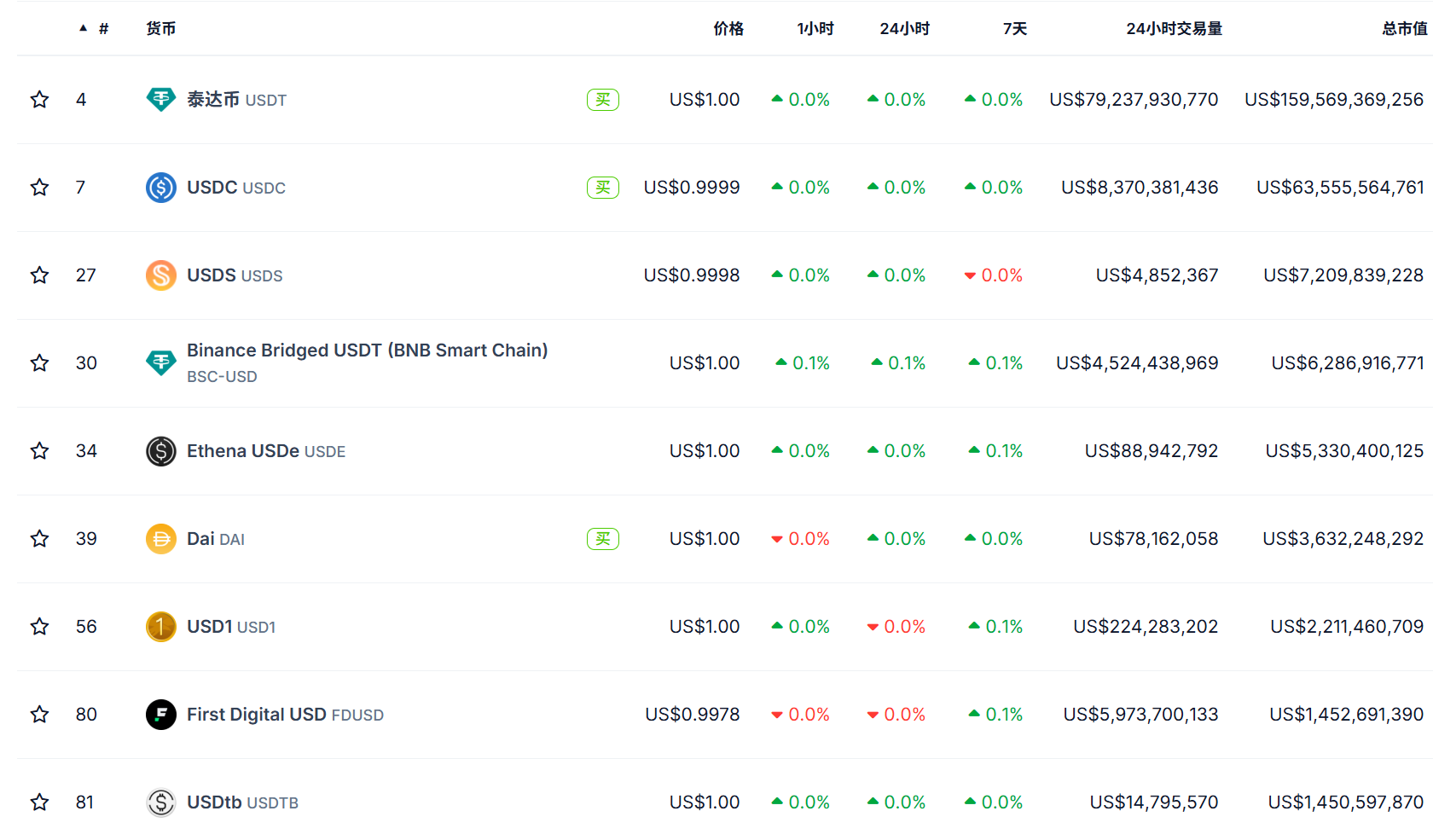Behind the Tokenized Stock Boom: The Evolving Narrative of Tokenization
At the beginning of this month, Robinhood and others announced support for US stock trading on the blockchain and plan to launch their own public chain. Meanwhile, Kraken and others have also launched trading pairs for US stock tokens like AAPL, TSLA, and NVDA, sparking a wave of on-chain stock trading.
But is it really a new concept?
In fact, this seemingly sudden wave of Tokenization is backed by a seven-year evolution of asset on-chain in the crypto world—from early synthetic asset experiments to the practical implementation of stablecoins, and then to the structured access of RWA (real-world assets). The narrative mainline of “assets × blockchain” has never been interrupted; it is just now experiencing a more realistic and institutional reboot.

The tokenization of US stocks in new bottles.
On the surface, stock tokenization seems to be a new trend in the Web3 world, but it is actually more like a resurgence of an old narrative.
Users who have experienced the last on-chain boom cycle should remember the complete set of synthetic asset mechanisms pioneered by projects like Synthetix and Mirror, where users can mint synthetic assets (such as sAAPL and mTSLA) on-chain that are pegged to US stocks, fiat currencies, indices, and even commodities by over-collateralizing native crypto assets (like SNX and UST), achieving an asset trading experience without intermediaries.
The biggest advantage of this model lies in the absence of real asset custody and clearing, no counterparty matching, infinite depth, and zero slippage experience. However, while the ideal is beautiful, the reality is stark—oracle distortion, severe asset volatility, frequent systemic risks, coupled with a lack of real regulatory alignment, have led to the gradual withdrawal of such “synthetic assets” from the historical stage.
Nowadays, the craze for tokenization of US stocks has transitioned from “asset synthesis” to “real stock mapping,” marking a new stage in the narrative of tokenization entering the realm of “off-chain real asset integration.”
Taking the US stock token trading products launched by Robinhood and others as an example, the information disclosed shows that what is behind is the on-chain channel of real stock assets and the reconstruction of the settlement structure, namely the custody of real stocks, with funds flowing into U.S. stocks through compliant brokerages.

Objectively speaking, the tokenization of US stocks under this model still faces many challenges in terms of compliance paths and cross-border operations, but for users, it can be considered a brand new on-chain investment window:
No account opening, no identity verification, no geographical restrictions, just a cryptocurrency wallet and a stablecoin, you can bypass the cumbersome processes of traditional brokers and trade U.S. stock tokens directly on DEX, achieving 24/7 trading, second-level settlement, and global borderless access. This experience is difficult for the traditional securities system to reach for global investors, especially for non-U.S. residents.
The establishment of this logic relies on the ability of blockchain as the “clearing + asset confirmation” infrastructure, and it also reflects the significant leap of Tokenization from technical experimentation to actual user application.
Furthermore, from a more macro perspective, “U.S. stock tokenization” is merely a subset of the tokenization process of RWA (Real World Assets), which reflects the continuous evolution of the narrative of asset on-chain since the emergence of the Tokenization concept in 2017, from token issuance to synthetic assets, and then to RWA anchoring.
The Past and Present of Tokenization
Looking back at the development of Tokenization, it is not difficult to find that it runs through the core main line of every round of infrastructure innovation and narrative evolution in the crypto world.
It can be said that from the “token issuance boom” in 2017 to the “DeFi Summer” in 2020, and then to the recent “RWA narrative” and the latest “tokenization of US stocks” implementation, a relatively clear evolution path of on-chain assets can be outlined.
Among them, the earliest large-scale practice of Tokenization began with the token issuance frenzy in 2017, when the concept of “token as equity” ignited the fundraising imagination of countless entrepreneurial projects. Ethereum provided low-threshold issuance and fundraising tools, making Token a digital certificate representing future rights (equity, usage rights, governance rights).
However, in the context of the lack of a clear regulatory framework, the absence of value capture mechanisms, and severe information asymmetry, many projects have become mere air coin bubbles, ultimately retreating as the bull market subsides.
In 2020, the explosion of DeFi marked the second peak of Tokenization applications.
A series of on-chain native financial protocols represented by Aave, MakerDAO, and Compound have constructed a complete permissionless, censorship-resistant financial system using on-chain native assets such as ETH. Users can complete complex financial operations such as lending, staking, trading, and leveraging on-chain.
At this stage, the Token is no longer a financing certificate, but has evolved into a core asset class of on-chain financial instruments, such as wrapped assets (WBTC), synthetic assets (sUSD), and interest-bearing assets (stETH). Even MakerDAO has begun to accept real-world assets like real estate as collateral, thereby achieving a better integration of traditional finance and DeFi.
The reboot of tokenization marks a watershed moment, beginning the attempt to introduce more stable and larger real-world assets.
Since 2021, the narrative has further escalated, with protocols like MakerDAO beginning to attempt to integrate real-world assets (RWA) such as real estate, government bonds, and gold as underlying collateral. The definition of Tokenization has also expanded from “tokenization of native assets” to “tokenization of off-chain assets.”
Unlike traditional abstract assets anchored by code, RWA represents the on-chain confirmation, segmentation, and circulation of real assets anchored by physical assets or statutory rights. Due to their relatively stable value, clear valuation standards, and mature experience in compliance regulation, they also provide a more reality-supported “value anchor” for on-chain finance.

According to the latest data from the RWA research platform rwa.xyz, the current total market size of RWA exceeds $25 billion, while BlackRock’s forecast is even more optimistic, predicting that the market value of tokenized assets will reach $10 trillion by 2030, which means there is potential growth space of over 40 times in the next 7 years.
So next, which real-world assets’ tokenization will take the lead and become the on-chain financialization anchor points of RWA?
Who will be the stronghold of tokenization?
It is no exaggeration to say that in the past five years, the most successful Tokenization products have been neither gold nor stocks, but stablecoins.
It is the first truly tokenized asset to find the “Product-Market Fit (PMF)”: mapping cash, the most basic and liquid asset, into the on-chain world and building the first “value bridge” connecting TradFi and DeFi.
Its operational logic is also highly representative, with real assets (such as US dollars or short-term government bonds) held off-chain by banks or custodial institutions, and equivalent tokens (such as USDT, USDC) issued on-chain. Users can hold, pay, trade, or interact with DeFi protocols through their crypto wallets.
This not only inherits the stability of fiat currency but also fully releases the advantages of blockchain: efficient settlement, low-cost transfer, 24/7 trading capability, and seamless integration with smart contracts.
As of now, the total market value of stablecoins worldwide has exceeded 250 billion USD, indicating that the true implementation of Tokenization depends on whether it addresses the issues of asset circulation and trading efficiency in reality, rather than merely relying on technological innovation itself.

Today, the tokenization of US stocks seems to be becoming the next focal point for tokenized assets.
Unlike previous synthetic asset models that relied on oracles and algorithms, today’s “real stock tokens” solutions are increasingly approaching real financial infrastructure, gradually exploring the standard path of “real stock custody + on-chain mapping + decentralized trading.”
A notable trend is that mainstream players, including Robinhood, are successively announcing the launch of native chains or self-developed chains, and supporting the trading of real stocks on-chain. From the information disclosed so far, the underlying technology partners for these tokenization paths are mostly still based on the Ethereum ecosystem (such as Arbitrum, etc.), which undoubtedly reaffirms Ethereum’s core position as the infrastructure for Tokenization.
The reasons are that Ethereum not only has a mature smart contract system, a large developer community, and a rich set of asset compatibility standards, but more importantly, its neutrality, openness, and composability provide the most scalable soil for the mapping of financial assets.
Overall, if the previous rounds of Tokenization were driven by Web3 native projects as experiments in crypto finance, this time, it feels more like a professional restructuring led by TradFi—coming with real assets, genuine regulatory compliance needs, and demands from the global market.
Will this be the true beginning of tokenization?
We are looking forward to it.
Statement:
- This article is reproduced from [TechFlow] The copyright belongs to the original author [imToken] If you have any objections to the reprint, please contact Gate Learn TeamThe team will process it as quickly as possible according to the relevant procedures.
- Disclaimer: The views and opinions expressed in this article are solely those of the author and do not constitute any investment advice.
- Other language versions of the article are translated by the Gate Learn team, unless otherwise mentioned.GateUnder such circumstances, it is prohibited to copy, disseminate, or plagiarize translated articles.





